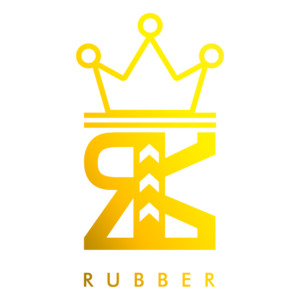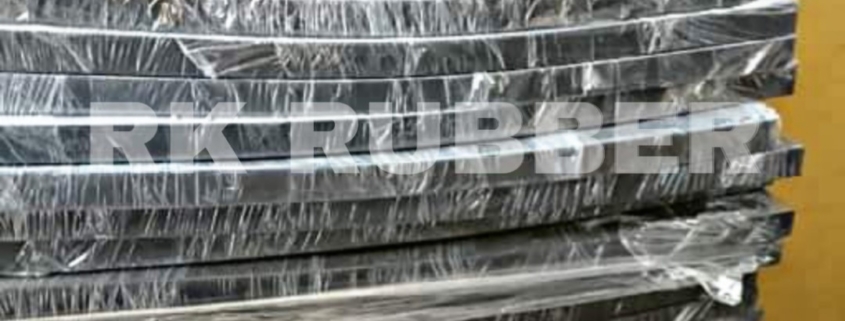Anti Vibration Rubber Pad
Anti-Vibration Pad Manufacturer in the Philippines
In the Philippines, manufacturers of anti-vibration pad address critical industrial needs by providing solutions that minimize mechanical vibrations and noise. These components are essential for protecting machinery integrity and ensuring operational stability across sectors such as manufacturing, construction, and HVAC systems. Understanding the specific material properties and design considerations employed by leading manufacturers reveals how these pads enhance equipment performance and longevity, setting the stage for a detailed analysis of their applications and benefits.
Key Points
- RK Rubber is a leading manufacturer of high-quality anti-vibration pads in the Philippines, offering durable and chemically resistant rubber compounds.
- They provide custom-designed anti-vibration pads tailored to specific machinery and operational requirements.
- Their pads are suitable for diverse industries, including manufacturing, marine, and commercial applications.
- RK Rubber ensures quality through stringent material testing and compliance with industrial standards.
- Maintenance support and guidelines are offered to maximize the lifespan and performance of their anti-vibration pads.
Importance of Anti-Vibration Pads in Industrial Applications
In numerous industrial environments, anti-vibration pads serve as critical components for mitigating the detrimental effects of machinery-induced vibrations. These pads facilitate vibration reduction, preventing mechanical wear and extending equipment lifespan. By effectively isolating vibrational energy, they enhance operational stability and reduce structural fatigue. Furthermore, anti-vibration pads contribute substantially to noise control, minimizing acoustic emissions that compromise workplace safety and productivity. Their integration supports compliance with stringent industrial standards while optimizing maintenance schedules. Advanced materials and engineering design enable these pads to withstand harsh conditions, ensuring consistent performance under dynamic loads. Consequently, their deployment is indispensable for industries seeking to innovate through improved machinery reliability, reduced downtime, and enhanced environmental ergonomics. The strategic use of anti-vibration pads translates directly into cost savings and elevated operational efficiency.
Key Features of RK Rubber’s Anti-Vibration Pads
Although anti-vibration pads are widely available, RK Rubber’s products distinguish themselves through superior resistance to extreme weather, corrosion, and mechanical shock. Engineered for ideal vibration isolation and noise reduction, these pads enhance machinery longevity and operational stability. Key features include:
- High durability under fluctuating environmental conditions
- Exceptional mechanical shock absorption capabilities
- Advanced rubber compounds ensuring extended lifespan
- Consistent performance in vibration isolation across diverse machinery
- Resistance to chemical corrosion, minimizing maintenance frequency
These attributes position RK Rubber’s anti-vibration pads as a reliable solution for industries seeking innovative, cost-effective methods to protect equipment and reduce operational noise. Their precise engineering aligns with stringent industry standards, ensuring enhanced equipment performance and workplace safety through effective vibration and noise control.
Customization Options for Specific Machinery Needs
When machinery specifications vary widely across industries, RK Rubber offers tailored customization options to guarantee precise compatibility and ideal vibration isolation performance. Leveraging advanced material engineering and design capabilities, RK Rubber develops custom design solutions that address unique operational demands. These bespoke pads optimize load distribution and dynamic response, directly contributing to performance enhancement and equipment longevity. By integrating client-specific parameters—such as weight, frequency range, and environmental conditions—RK Rubber ascertains that each anti-vibration pad meets stringent functional requirements. This innovation-driven approach not only mitigates vibration-induced stress but also enhances machine stability and noise reduction. Consequently, RK Rubber’s customization services provide industries with targeted vibration control solutions, maximizing operational efficiency and safeguarding critical machinery from premature wear and failure.
Comparison of Different Types of Anti-Vibration Pads
Anti-vibration pads are manufactured from various materials, including neoprene, foam rubber, and steel, each exhibiting distinct performance characteristics such as load-bearing capacity, damping efficiency, and environmental resistance. The selection of an appropriate pad material depends on the specific application requirements, including machinery type, operating conditions, and expected vibration frequencies. A systematic comparison of these factors is essential to optimize vibration isolation and guarantee equipment longevity across diverse industrial settings.
Types of Materials
Vibration isolation materials vary considerably in composition and performance characteristics, influencing their suitability for specific industrial applications. Material properties and advanced rubber formulations are critical to designing effective anti-vibration pads, addressing diverse operational demands. Common materials include:
- Natural rubber: offers excellent elasticity and damping but limited chemical resistance
- Neoprene: combines durability with resistance to oils and weathering
- Foam rubber: provides lightweight cushioning with superior shock absorption
- Silicone rubber: excels in temperature resilience and flexibility
- Steel-reinforced composites: deliver structural support alongside vibration attenuation
Each material’s inherent characteristics dictate application scope, lifespan, and maintenance frequency. Innovators prioritize blends enhancing mechanical strength and environmental resistance, optimizing vibration isolation. By leveraging cutting-edge rubber formulations, manufacturers can tailor pads to specific machinery needs, reducing downtime and improving system reliability.
Performance Characteristics
Although various types of rubber pads serve to mitigate equipment vibrations, their performance characteristics differ considerably based on material composition, structural design, and application environment. Neoprene pads exhibit superior durability and resistance to environmental factors, making them ideal for heavy-duty applications, whereas foam rubber pads provide enhanced shock absorption but lower load capacity. Steel-reinforced pads offer structural rigidity with moderate vibration dampening, while easy-cut varieties enable customization during pad installation for precise equipment fit. Accurate vibration measurement is critical in evaluating pad effectiveness, guiding optimal selection and placement. The interplay between pad stiffness, damping properties, and load distribution directly influences vibration isolation performance. Selecting the appropriate anti-vibration pad necessitates balancing these parameters to achieve targeted vibration reduction, ensuring machinery reliability and operational efficiency in demanding industrial contexts.
Application Suitability
Performance attributes such as material composition, load capacity, and environmental resistance directly inform the selection of suitable rubber pads for specific applications. Different types of anti-vibration pads offer distinct advantages depending on operational demands, installation techniques, and noise reduction requirements. Key comparisons include:
- Neoprene pads: excellent chemical resistance, suited for harsh environments
- Foam rubber pads: superior vibration absorption, ideal for lightweight machinery
- Steel-reinforced pads: high load capacity, best for heavy industrial equipment
- Easy-cut pads: customizable sizing, facilitating efficient installation techniques
- Composite pads: balanced performance for moderate noise reduction and durability
Selecting the appropriate pad enhances equipment longevity, reduces maintenance costs, and improves noise control, aligning with innovative industrial standards and operational efficiency goals.
Applications of Anti-Vibration Rubber Pads Across Industries
When operating machinery in diverse sectors, mitigating the effects of mechanical oscillations is essential to maintain structural integrity and operational efficiency. Anti-vibration rubber pads serve as critical components in industries such as manufacturing, marine, and commercial facilities, where vibration analysis informs the best placement and selection of these pads. Their deployment greatly contributes to noise reduction and minimizes equipment wear caused by persistent oscillations. In manufacturing plants, these pads isolate vibrations from heavy machinery, enhancing precision and reducing downtime. Marine applications benefit from shock absorption, ensuring stable propulsion systems, while commercial environments achieve quieter operations, improving occupant comfort. By integrating advanced anti-vibration solutions, industries achieve enhanced machinery longevity, operational stability, and compliance with noise regulation standards, driving innovation and sustainable performance.
Benefits of Using High-Quality Anti-Vibration Pads
The utilization of high-quality anti-vibration pads substantially enhances machinery reliability by effectively isolating and absorbing mechanical vibrations. These pads deliver critical user benefits by minimizing wear and tear, thereby extending equipment lifespan and reducing downtime. Their advanced materials and design contribute to improved operational efficiency by stabilizing machinery and mitigating noise emissions. Key advantages include:
- Enhanced vibration dampening for precision equipment protection
- Reduction in maintenance frequency and associated costs
- Noise reduction fostering safer, more productive environments
- Resistance to environmental stressors ensuring consistent performance
- Customizable solutions tailored to specific industrial applications
Implementing top-tier anti-vibration pads drives innovation in machinery maintenance strategies, promoting sustainability and optimized performance across diverse sectors.
Quality Assurance Processes at RK Rubber Enterprise Co
Rigorous quality assurance protocols underpin the manufacturing operations at RK Rubber Enterprise Co., guaranteeing each anti-vibration pad adheres to stringent industry standards. The process begins with meticulous material sourcing, selecting high-grade rubber compounds that meet rigorous durability and resilience criteria. Advanced testing protocols are implemented throughout production, including assessments for tensile strength, compression set, and resistance to extreme temperatures, corrosion, and mechanical shock. These evaluations ensure consistent product performance across diverse industrial applications. RK Rubber’s quality assurance integrates real-time monitoring and statistical process control to detect deviations promptly, fostering continuous improvement. This systematic approach guarantees innovation-driven reliability, enabling RK Rubber to deliver anti-vibration pads that optimize machinery lifespan, reduce maintenance costs, and maintain operational stability in challenging environments.
Maintenance Tips for Prolonging Pad Lifespan
Proper maintenance greatly extends the functional lifespan of anti-vibration pads by preserving their material integrity and performance characteristics. Adhering to advanced pad cleaning protocols and ideal installation techniques prevents premature degradation and guarantees consistent vibration dampening. Essential maintenance tips include:
- Conduct routine inspections to identify wear or deformation.
- Implement regular pad cleaning using non-abrasive, chemical-compatible agents.
- Verify installation techniques conform to manufacturer specifications to prevent uneven stress distribution.
- Monitor environmental exposure, shielding pads from corrosive elements and extreme temperatures.
- Replace pads promptly upon detecting significant material fatigue or loss of elasticity.
These practices promote innovation-driven operational efficiency by maximizing pad durability, minimizing downtime, and reducing maintenance costs. Integrating such maintenance strategies aligns with industry best practices, supporting long-term equipment reliability and enhanced vibration control performance.
Frequently Asked Questions
What Is the Typical Lead Time for Ordering Customized Anti-Vibration Pads?
The typical production timeline for custom orders of anti-vibration pads ranges from two to four weeks, depending on complexity and specifications. This timeframe guarantees precision manufacturing aligned with industry innovation standards and client-specific performance requirements.
Are RK Rubber’S Anti-Vibration Pads Environmentally Friendly or Recyclable?
The environmental impact of RK Rubber’s anti-vibration pads hinges on their sustainability practices and material sourcing. While primarily engineered for durability and performance, ongoing innovations suggest increasing integration of recyclable components and eco-conscious methodologies.
How Do I Determine the Correct Size of Anti-Vibration Pad for My Equipment?
Determining the correct size of an anti-vibration pad involves precise size measurement of equipment load points and surface area to guarantee ideal equipment compatibility. Accurate assessment enhances vibration dampening efficiency and extends machinery lifespan within innovative industrial applications.
Can RK Rubber Pads Be Used in Both Indoor and Outdoor Settings?
RK Rubber pads excel in both indoor applications and outdoor applications, offering robust resistance to extreme weather, corrosion, and shock. Their adaptability guarantees ideal vibration control, longevity, and noise reduction across diverse industrial environments.
What Warranty Coverage Is Provided With RK Rubber’S Anti-Vibration Pads?
Warranty details typically cover manufacturing defects and performance within specified conditions, ensuring the pad’s lifespan aligns with industry standards. This guarantees reliability and durability, supporting innovative applications requiring sustained vibration control and extended operational efficiency.
Conclusion
In the competitive landscape of industrial machinery, investing in high-quality anti-vibration pads is key to keeping operations running like clockwork. RK Rubber’s commitment to customization, advanced materials, and rigorous quality assurance guarantees peak vibration isolation tailored to diverse applications. By addressing specific machinery requirements and adhering to maintenance best practices, these pads considerably extend equipment lifespan and enhance performance, proving that attention to detail truly separates the wheat from the chaff in vibration control solutions.

